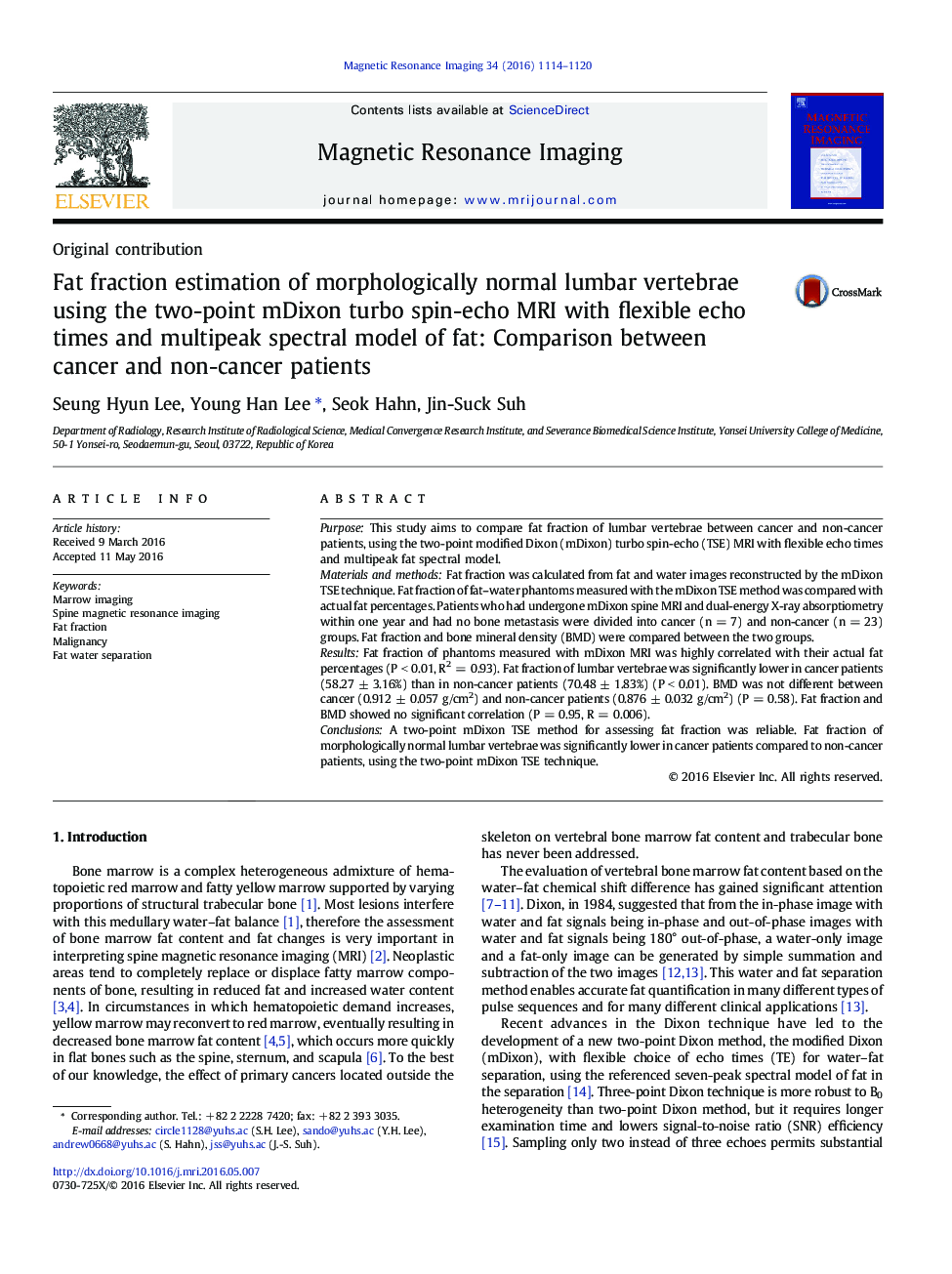| کد مقاله | کد نشریه | سال انتشار | مقاله انگلیسی | نسخه تمام متن |
|---|---|---|---|---|
| 1806116 | 1025185 | 2016 | 7 صفحه PDF | دانلود رایگان |
PurposeThis study aims to compare fat fraction of lumbar vertebrae between cancer and non-cancer patients, using the two-point modified Dixon (mDixon) turbo spin-echo (TSE) MRI with flexible echo times and multipeak fat spectral model.Materials and methodsFat fraction was calculated from fat and water images reconstructed by the mDixon TSE technique. Fat fraction of fat–water phantoms measured with the mDixon TSE method was compared with actual fat percentages. Patients who had undergone mDixon spine MRI and dual-energy X-ray absorptiometry within one year and had no bone metastasis were divided into cancer (n = 7) and non-cancer (n = 23) groups. Fat fraction and bone mineral density (BMD) were compared between the two groups.ResultsFat fraction of phantoms measured with mDixon MRI was highly correlated with their actual fat percentages (P < 0.01, R2 = 0.93). Fat fraction of lumbar vertebrae was significantly lower in cancer patients (58.27 ± 3.16%) than in non-cancer patients (70.48 ± 1.83%) (P < 0.01). BMD was not different between cancer (0.912 ± 0.057 g/cm2) and non-cancer patients (0.876 ± 0.032 g/cm2) (P = 0.58). Fat fraction and BMD showed no significant correlation (P = 0.95, R = 0.006).ConclusionsA two-point mDixon TSE method for assessing fat fraction was reliable. Fat fraction of morphologically normal lumbar vertebrae was significantly lower in cancer patients compared to non-cancer patients, using the two-point mDixon TSE technique.
Journal: Magnetic Resonance Imaging - Volume 34, Issue 8, October 2016, Pages 1114–1120
